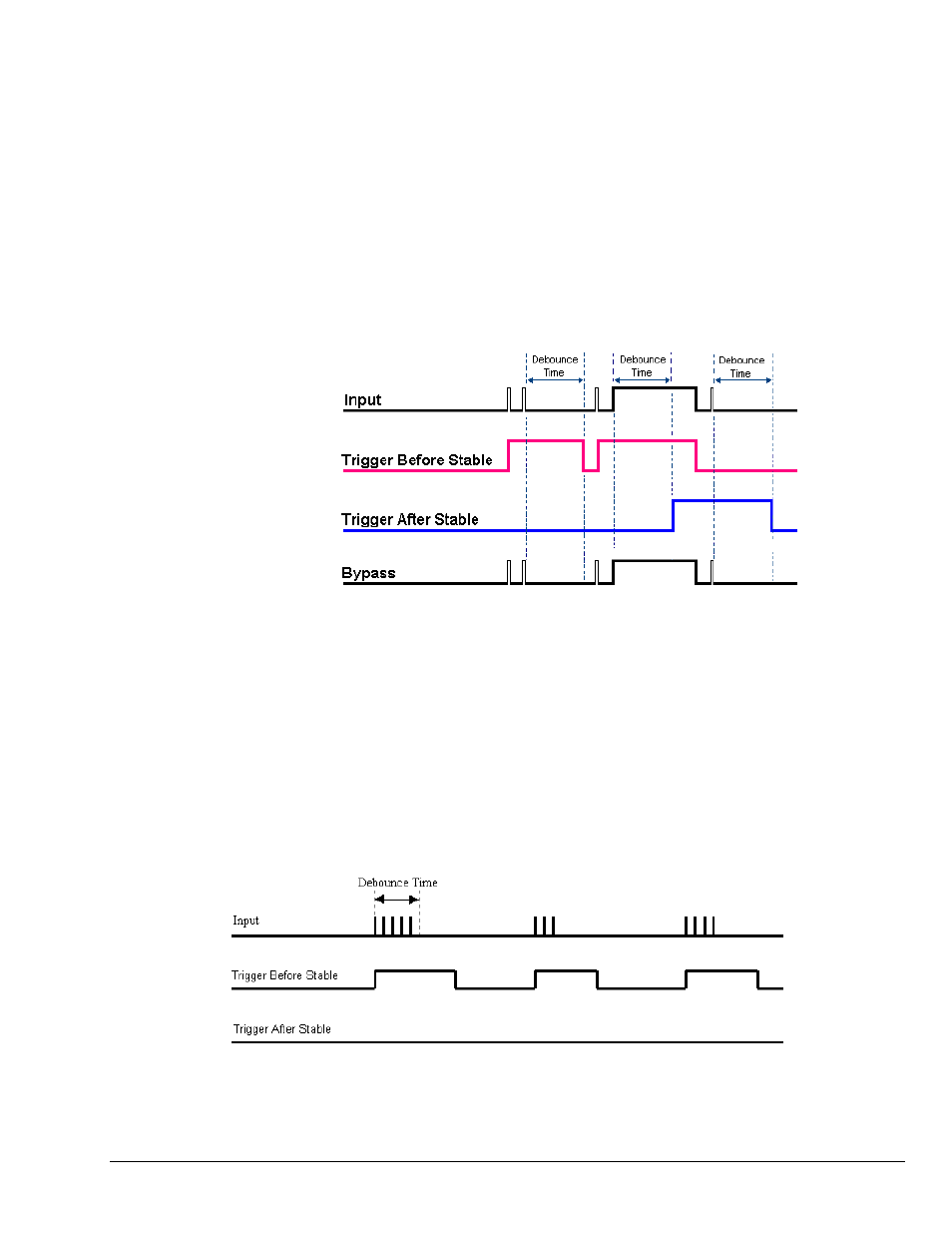Measurement Computing ZonicBook 618E rev.3.4 User Manual
Page 71

T3 – During time period T3, the input signal is stable for a time period equal to T1, meeting the debounce
requirement. The output is held at the high state. This is the same state as the input.
T4 – At anytime during time period T4, the input can change state. When this happens, the output will
also change state. At the end of time period T4, the input changes state, going low, and the output
follows this action [by going low].
T5 – During time period T5, the input signal again has disturbances that cause the input to not meet the
debounce time requirement. The output does not change state.
T6 – After time period T6, the input signal has been stable for the debounce time and therefore any edge
on the input after time period T6 will be immediately reflected in the output of the debounce module.
Mode Comparison
The following example shows how the two modes interpret the same input signal (which exhibits glitches).
Notice that the Trigger Before Stable mode will recognize more glitches than the Trigger After Stable
mode. Use the bypass option to achieve maximum glitch recognition.
Example of Two Debounce Modes Interpreting the Same Signal
Debounce times should be set according to the amount of instability expected in the input signal. Setting a
debounce time that is too short may result in unwanted glitches clocking the counter. Setting a debounce
time too long may result in an input signal being rejected entirely. Some experimentation may be required
to find the appropriate debounce time for a particular application.
To see the effects of different debounce time settings, simply view the analog waveform along with the
counter output.
Use trigger before stable mode when the input signal has groups of glitches and each group is to be
counted as one. The trigger before stable mode will recognize and count the first glitch within a group but
reject the subsequent glitches within the group if the debounce time is set accordingly. The debounce time
should be set to encompass one entire group of glitches as shown in the following diagram.
Trigger after stable mode behaves more like a traditional debounce function: rejecting glitches and only
passing state transitions after a required period of stability. Trigger after stable mode is used with electro-
mechanical devices like encoders and mechanical switches to reject switch bounce and disturbances due to
a vibrating encoder that is not otherwise moving. The debounce time should be set short enough to accept
ZonicBook/618E
917695
Tach Channels 7-7